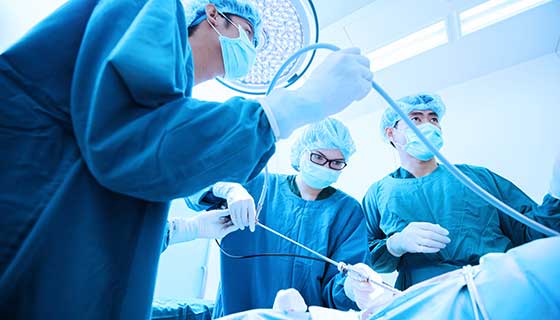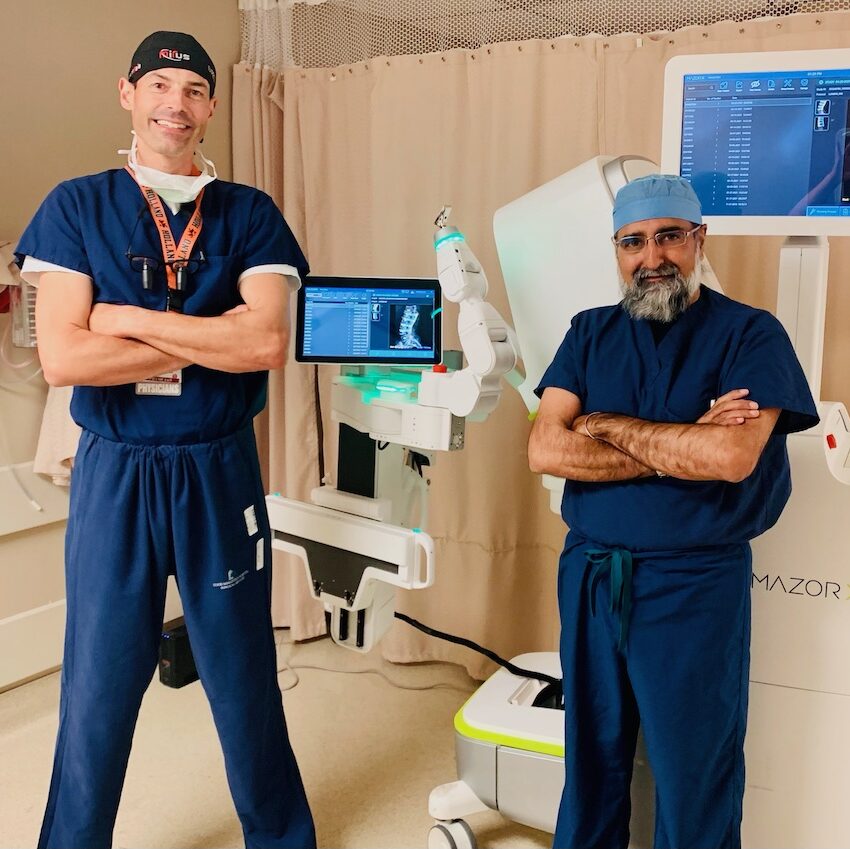The Relevance of Follow-Up Maintenance with the Best Spine Surgeons in St Louis MO
The Relevance of Follow-Up Maintenance with the Best Spine Surgeons in St Louis MO
Blog Article
Comprehending the Typical Spinal Column Issues That May Require Surgical Intervention
An extensive understanding of typical spine problems that might demand surgical intervention is important for both doctor and patients. Problems such as herniated discs, spine constriction, and degenerative disc illness not only influence wheelchair but can additionally significantly impair top quality of life. While traditional treatments frequently give alleviation, there are circumstances where surgical treatment ends up being one of the most feasible option for recovering feature. As we check out the various conditions and their implications, it comes to be evident that the decision-making procedure surrounding medical intervention is intricate and multifaceted, raising critical inquiries regarding timing, dangers, and end results.
Herniated Discs
Herniated discs are a widespread back condition, commonly arising from age-related degeneration or intense injury. best spine surgeons in st louis mo. This problem happens when the soft internal material of a back disc protrudes with its external layer, possibly compressing nearby nerves. The resulting signs can consist of localized discomfort, feeling numb, prickling, or weak point in the arm or legs, depending on the afflicted area of the spinal column
Diagnosis generally involves a thorough case history and checkup, typically supplemented by imaging research studies such as MRI or CT scans. These diagnostic devices permit healthcare experts to examine the extent of the herniation and its effect on surrounding frameworks.
Therapy alternatives for herniated discs vary from conservative steps, such as physical therapy and drug, to more intrusive treatments. Lots of clients find alleviation via non-surgical strategies, which concentrate on pain management and bring back function. Nonetheless, when conservative treatments fail to alleviate symptoms or when neurological shortages arise, medical intervention might be necessitated.
Surgical options, including discectomy or spine fusion, objective to soothe stress on the afflicted nerves and bring back back security. The decision to go after surgical procedure is typically made after mindful consideration of the individual's overall wellness, extent of signs and symptoms, and action to previous treatments.
Spine Stenosis

Signs often aggravate with activities that call for prolonged standing or walking, bring about a problem referred to as neurogenic claudication. Medical diagnosis normally includes imaging researches, such as MRI or CT scans, which assist envision the level of stenosis and determine impacted locations.
Treatment alternatives for back constriction may start conservatively, using physical treatment, discomfort management methods, and way of living alterations. Surgical treatments, such as decompression laminectomy or spinal combination, goal to eliminate pressure on the back cable and nerves, therefore easing discomfort and recovering feature.
Scoliosis
A significant variety of individuals are influenced by scoliosis, a problem defined by an uncommon side curvature of the spinal column (best spine surgeons in st louis mo). This curvature can develop in different types, including idiopathic scoliosis, which develops without a recognized cause, or as an outcome of neuromuscular conditions, genetic variables, or degenerative illness. The seriousness of scoliosis can vary significantly, ranging from moderate contours that may not need therapy to severe situations that can lead to discomfort, respiratory system issues, and decreased high quality of life
Non-surgical treatments include monitoring, bracing, and physical treatment. Medical intervention might become needed for people with substantial curvature that is aggravating, or for those experiencing devastating symptoms. Surgical choices frequently involve spine blend, which intends to deal with the curvature and support the back.

Degenerative Disc Illness

DDD is typically an outcome of the all-natural aging procedure, but aspects such as genes, lifestyle, and repetitive stress can accelerate its onset. Clients frequently report local pain in the lower back or neck, which might radiate to various other locations, such as the limbs. In severe cases, nerve compression can lead to neurological symptoms, including numbness, prickling, or weak point.
While conservative treatments, such as physical treatment and discomfort administration, can minimize symptoms for lots of people, some might need medical intervention. Surgical choices, such as spine blend or artificial disc substitute, goal to restore stability and relieve pain by dealing with the underlying concerns triggered by DDD. A complete analysis by a spinal column specialist is necessary to identify one of the most suitable therapy technique.
Fractured Spinal Column
Fractured vertebrae represent a substantial concern in spine health, commonly arising from injury, osteoporosis, or other degenerative conditions (best spine surgeons in st louis mo). These fractures can result in serious pain, loss of mobility, and possible problems such as spinal instability or neurological shortages. The device of injury usually entails either straight injury, such as drops or automobile crashes, or the progressive weakening of bones because of conditions like weakening of bones
Medical diagnosis is typically verified through imaging studies, including X-rays, CT scans, or MRIs, which reveal the level and sort of fracture. Treatment options vary relying on the fracture's intensity and the individual's general health and wellness. Conventional management might entail discomfort alleviation, rest, and physical treatment; however, surgical intervention might be needed for displaced fractures, those causing back instability, or when traditional actions fail.
Surgical strategies can include vertebroplasty or kyphoplasty, procedures targeted at maintaining the vertebra and relieving pain. In a lot more serious instances, spine combination might be shown to bring back architectural integrity. Timely and ideal intervention is vital in making certain optimum recovery and lessening lasting issues related to broken vertebrae.

Final Thought
In summary, typical spine troubles such as herniated discs, spinal stenosis, scoliosis, degenerative disc disease, and fractured vertebrae can significantly hinder top quality of life and necessitate medical intervention. While view publisher site traditional treatments might give relief in a lot of cases, relentless or serious symptoms typically necessitate surgical alternatives to bring back feature and relieve discomfort. Prompt medical diagnosis and proper management are vital to enhance individual outcomes and assist in recuperation in individuals influenced by these devastating conditions.
Back stenosis is a condition defined by the narrowing of the spinal canal, which explanation can lead to compression of the spinal cord and nerve roots. Surgical treatments, such as decompression laminectomy or spine blend, aim to ease pressure on the back cord and nerves, thus alleviating discomfort and restoring function. Surgical choices, such as back combination or artificial disc replacement, aim to recover stability and ease discomfort by resolving the underlying concerns created by DDD. Conservative administration might entail discomfort relief, rest, and physical treatment; nevertheless, surgical intervention might be necessary for displaced cracks, those causing spine instability, or when conservative actions fail.
In recap, typical back issues such as herniated discs, spine constriction, scoliosis, degenerative disc illness, and broken vertebrae can considerably hinder quality of life and require surgical treatment.
Report this page